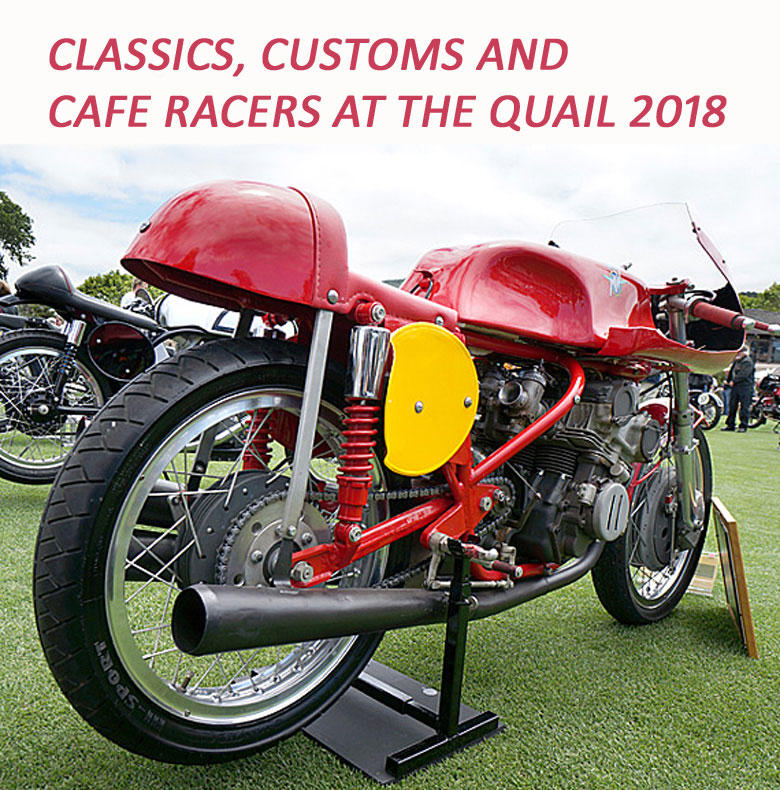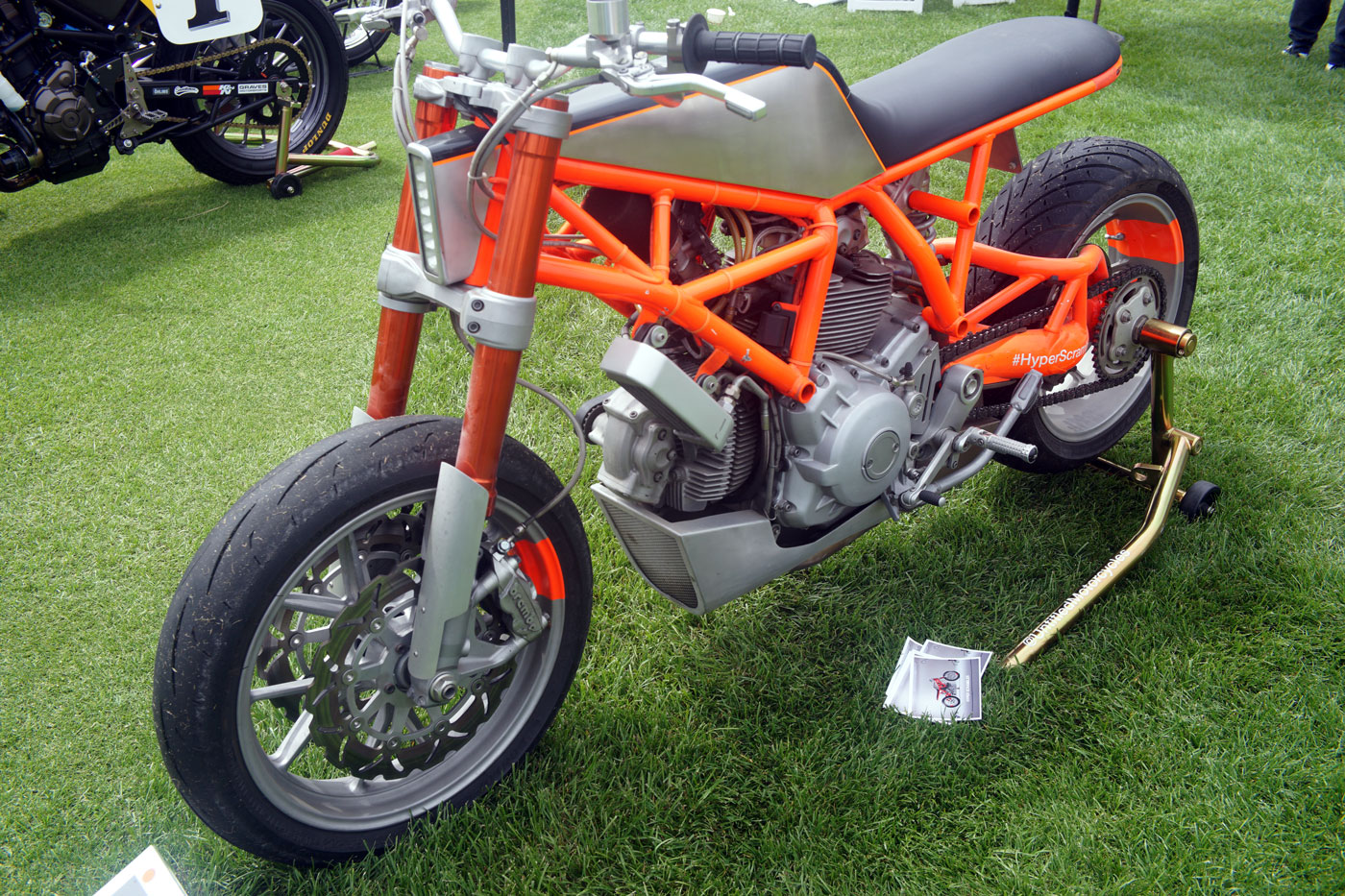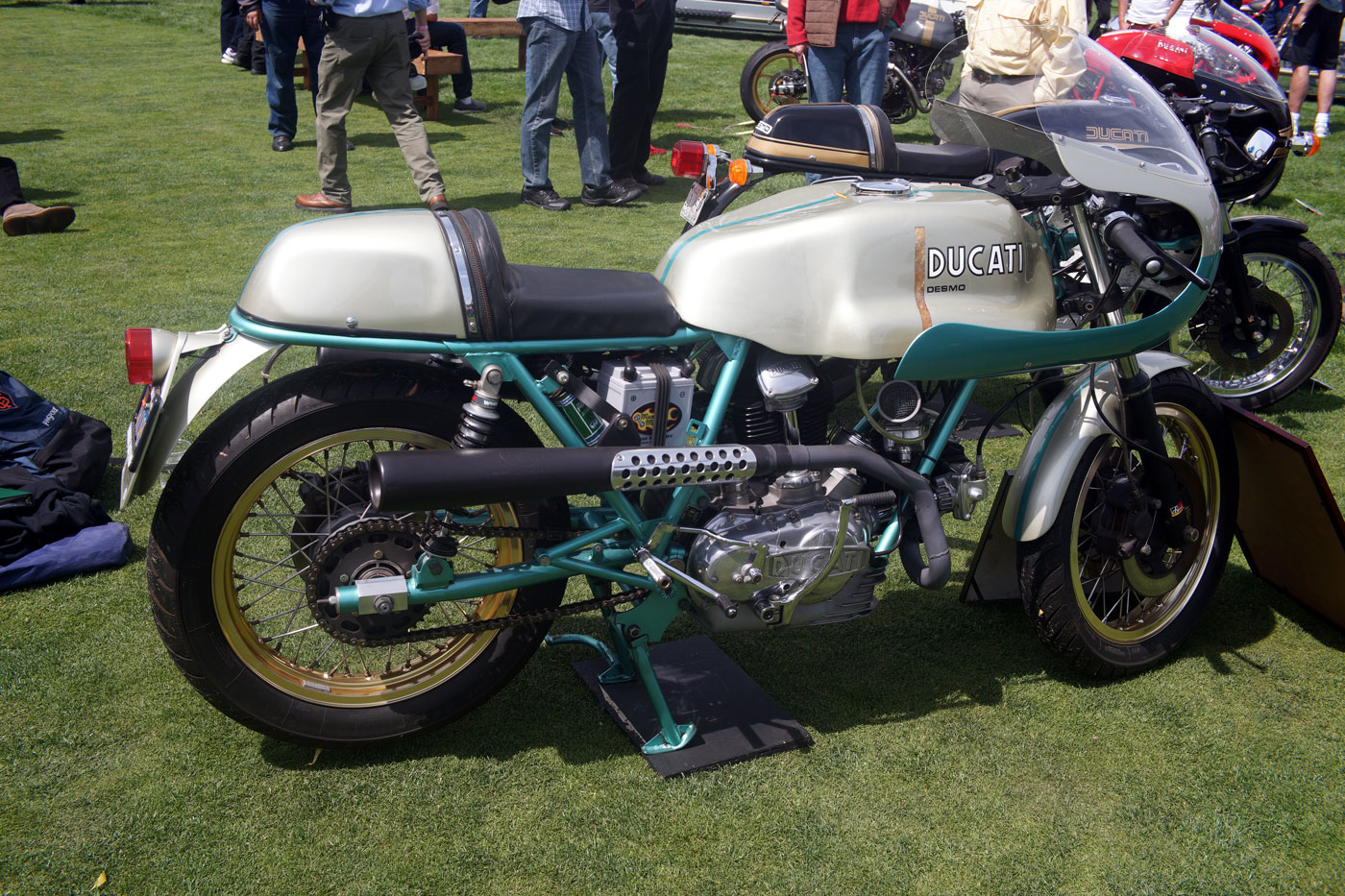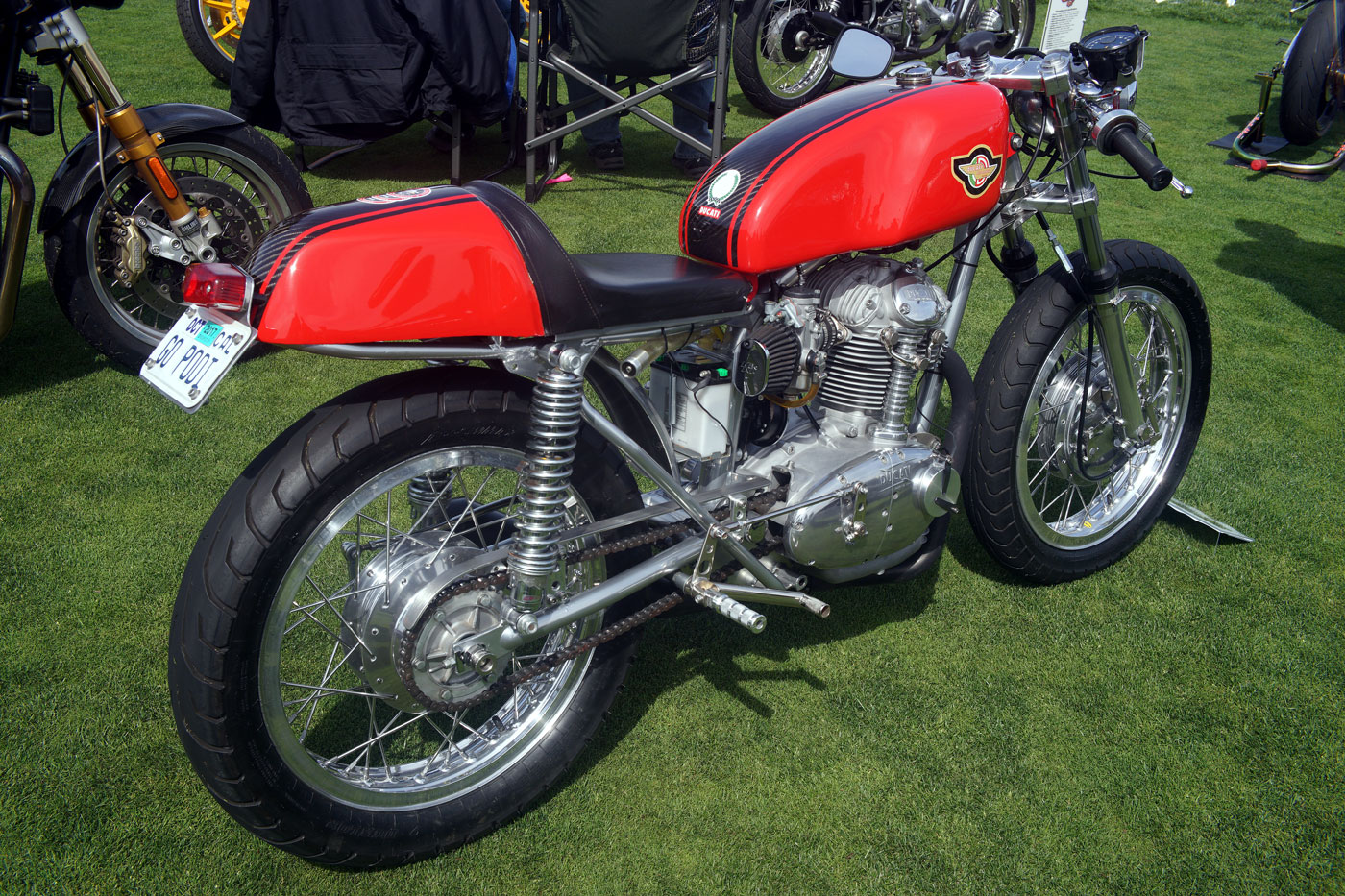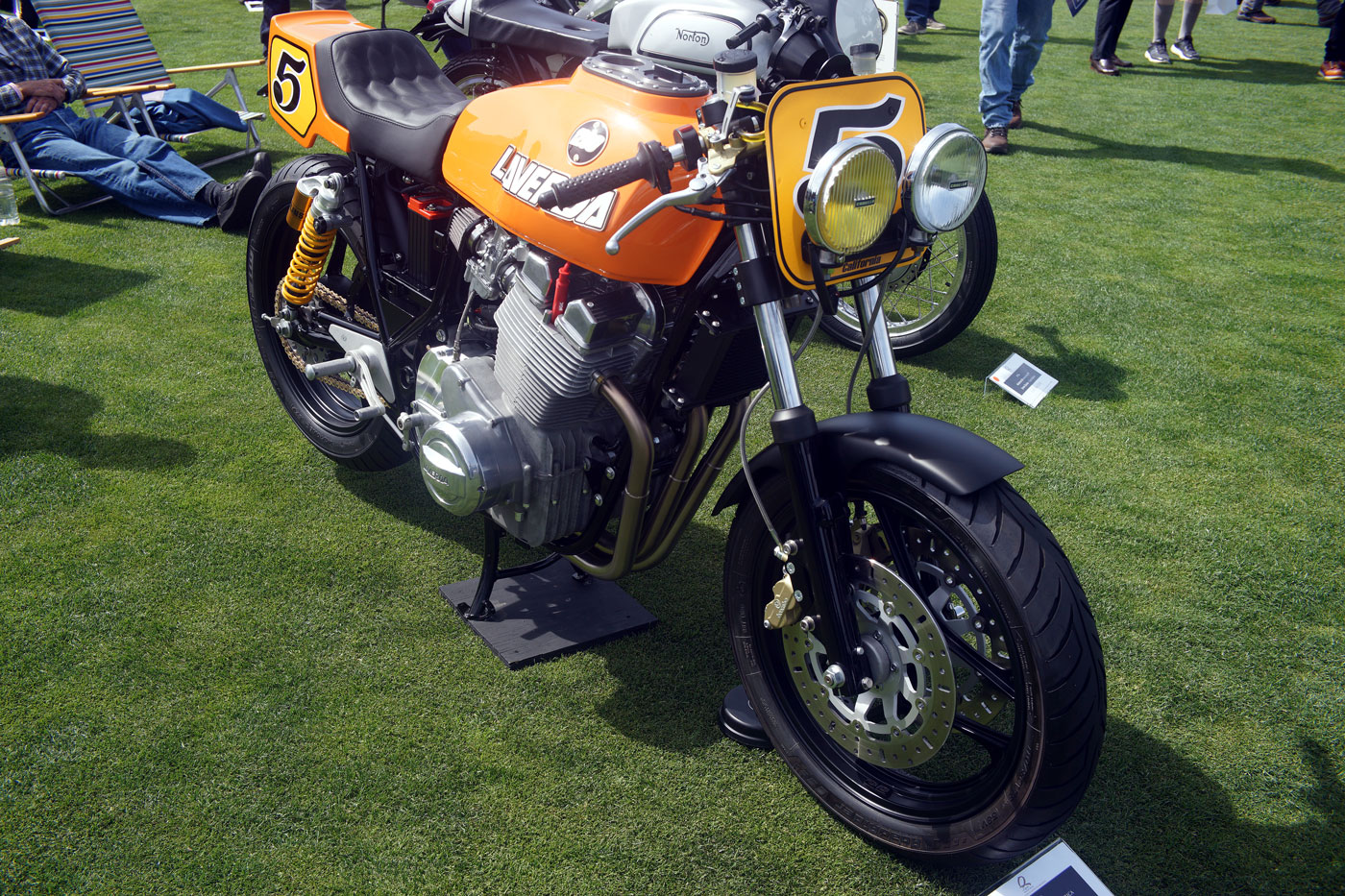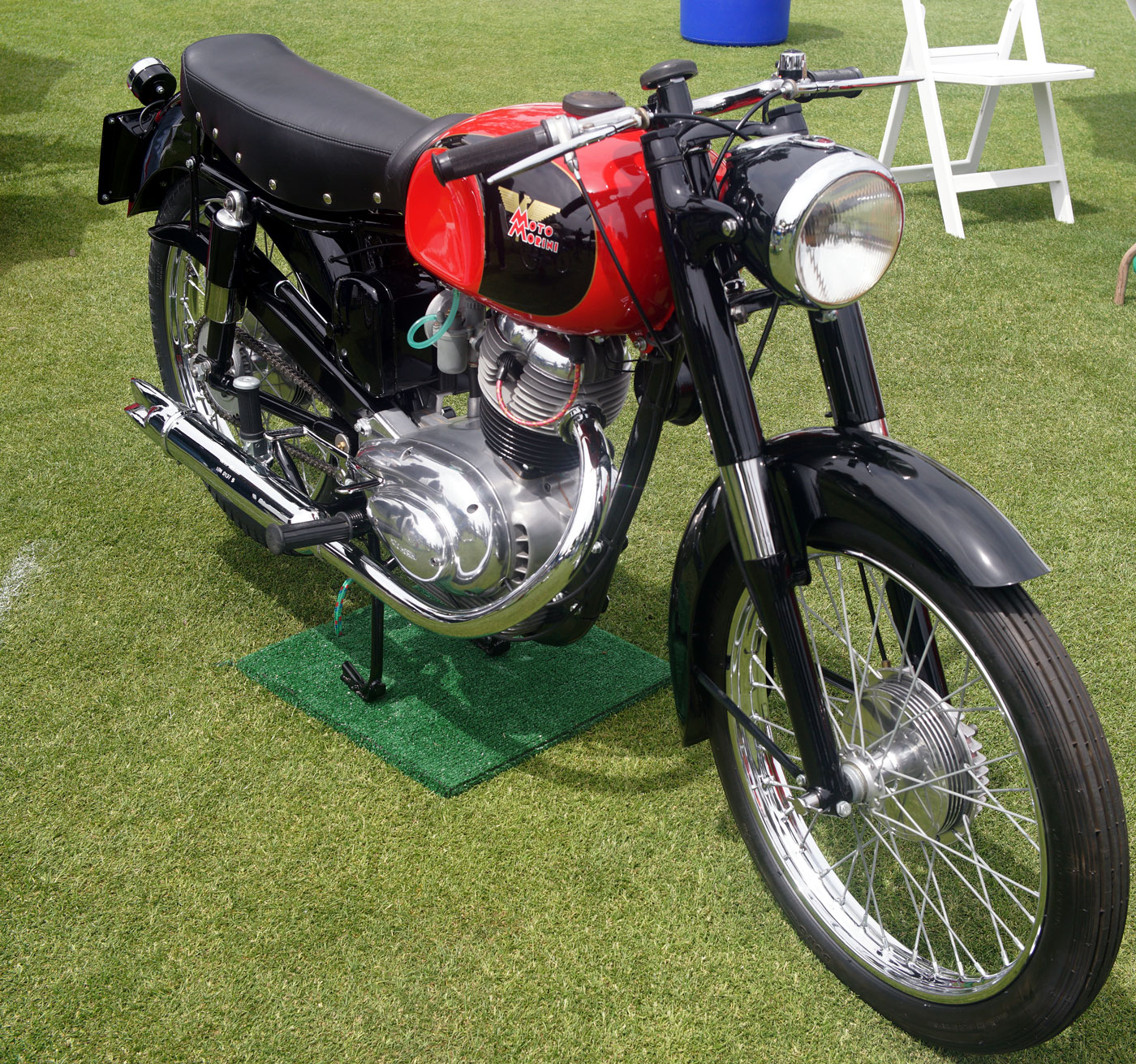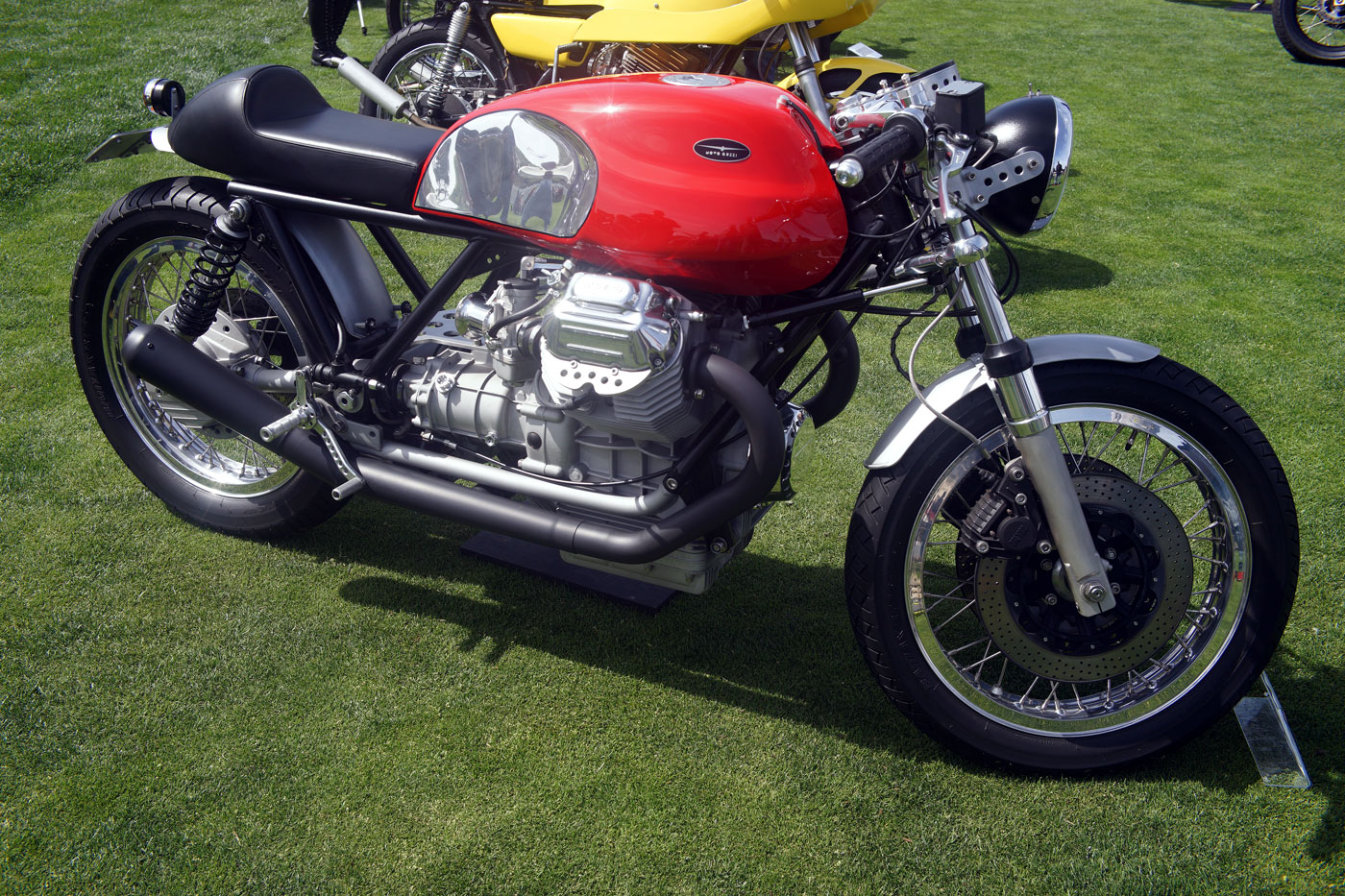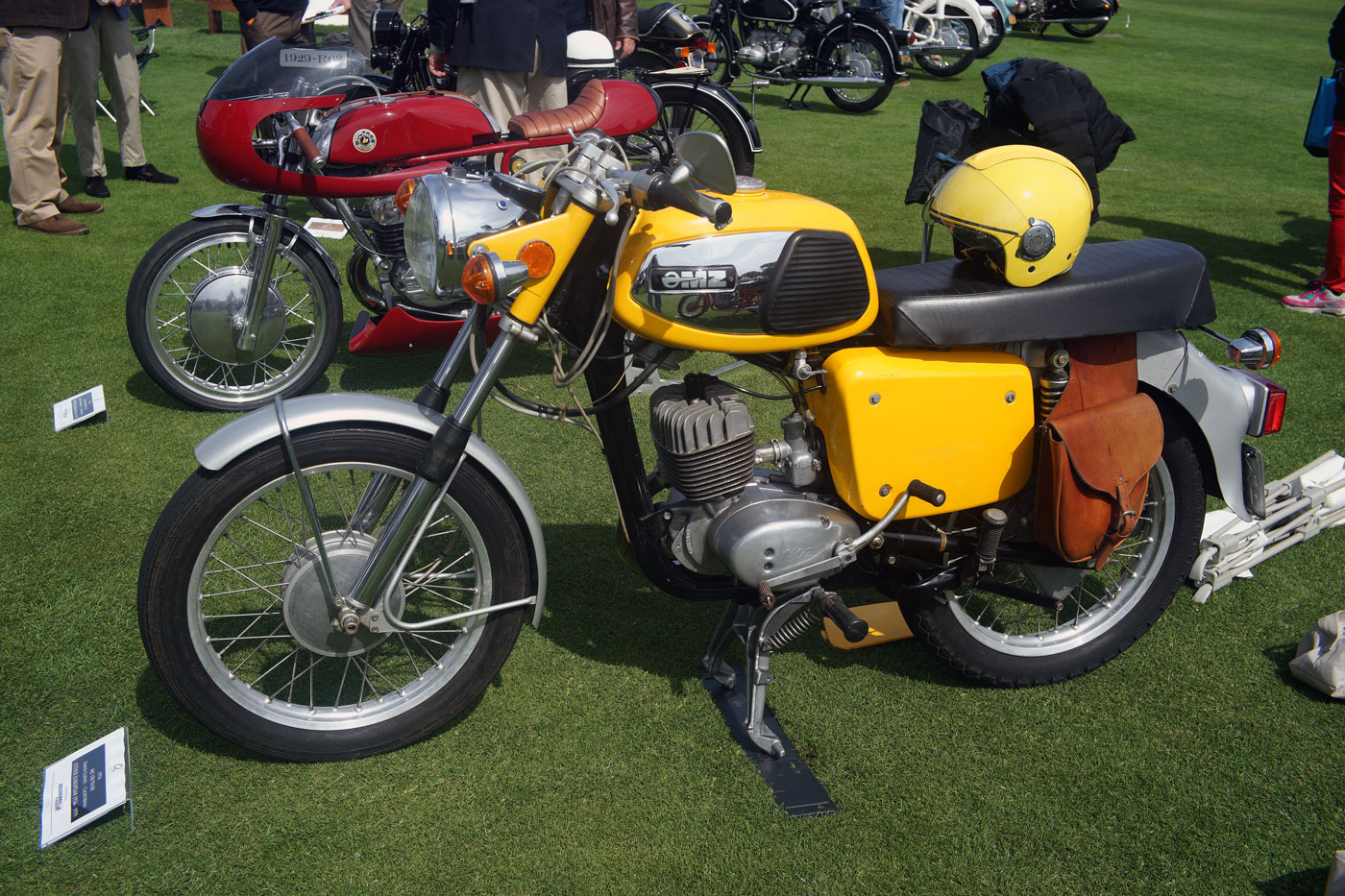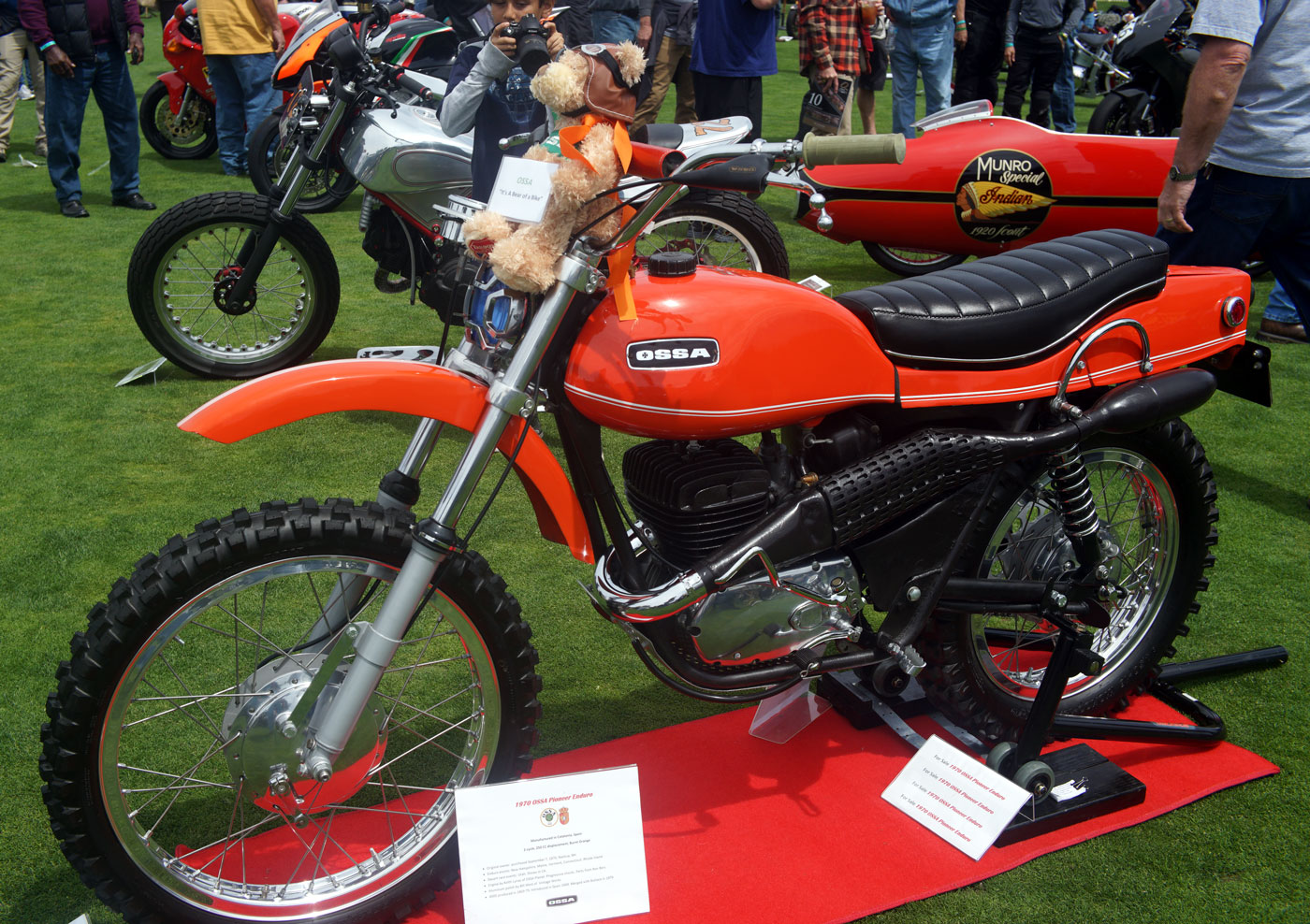Story by Brandes Elitch
Photos by Steve Snyder
In last year’s column about this show, I wrote, “The program says that ‘what began as a small gathering of enthusiasts has grown into one of the premier celebrations of motorcycling in the country’, and this is an understatement. There may be other events, such as Daytona Bike Week, but there is no other motorcycle show like this or anything close, anywhere else in the country.”
Aside from the depth and breadth of the bikes on display, there are four other contributing factors: the beauty of the Monterey Peninsula, one of the major tourist destinations in the U.S.; “The Ride,” which is a 100 mile loop the day before the show through ranchland, vineyards; a few laps on the historic Laguna Seca racetrack; the food, prepared by a Michelin 3-star rated chef.
Add to this the special displays on the show field which showcase individual collections, with the owner present. For instance, there was a display of rotary engine bikes, including Hercules, Norton, and Suzuki.

A special class was established for rotary engined cycles like this Norton Classic Rotary owned by Stephen Haddad.
In early May, organizer, collector, and philanthropist Gordon McCall (assisted by an organizing committee of eleven plus thirteen additional advisors) hosted the tenth Quail Motorcycle Gathering, accompanied by 3000 spectators and 350 bikes and their owners. This year there were 4 featured classes: Cafe Racers, the Ducati Monster, Arlen Ness, and electric bikes. There were 26 judging categories last year. With the exception of the electrics, all of these bikes were, well, old, and so they all had a story. It got me to thinking about the difference between restoring a bike and a car.
Restoring the sort of car that would interest our readers, such as an old Alfa, Lancia, Ferrari, or Maserati, means striving for a faithful and accurate recreation of what the car looked like when it was new. The judging rules at most car shows (other than a hot rod show of course) would put a premium on authenticity. For instance, per the judging rules of perhaps the most prestigious such organization, the Classic Car Club of America, there are six items which make a car ineligible to compete in a meet. Four of them are a non-authentic braking system, non-authentic transmission, non-authentic engine, and replica body. Given that the cost of restoring what the CCCA calls a “Full Classic” could easily exceed six figures, these rules are taken pretty seriously. Single-marque clubs follow this pattern, and there is even one show (Bloomington Gold, for Corvettes) where the entrants are penalized for “over-restoring” their cars to unrealistic standards that would be above and beyond what the car would have looked like on the showroom floor.
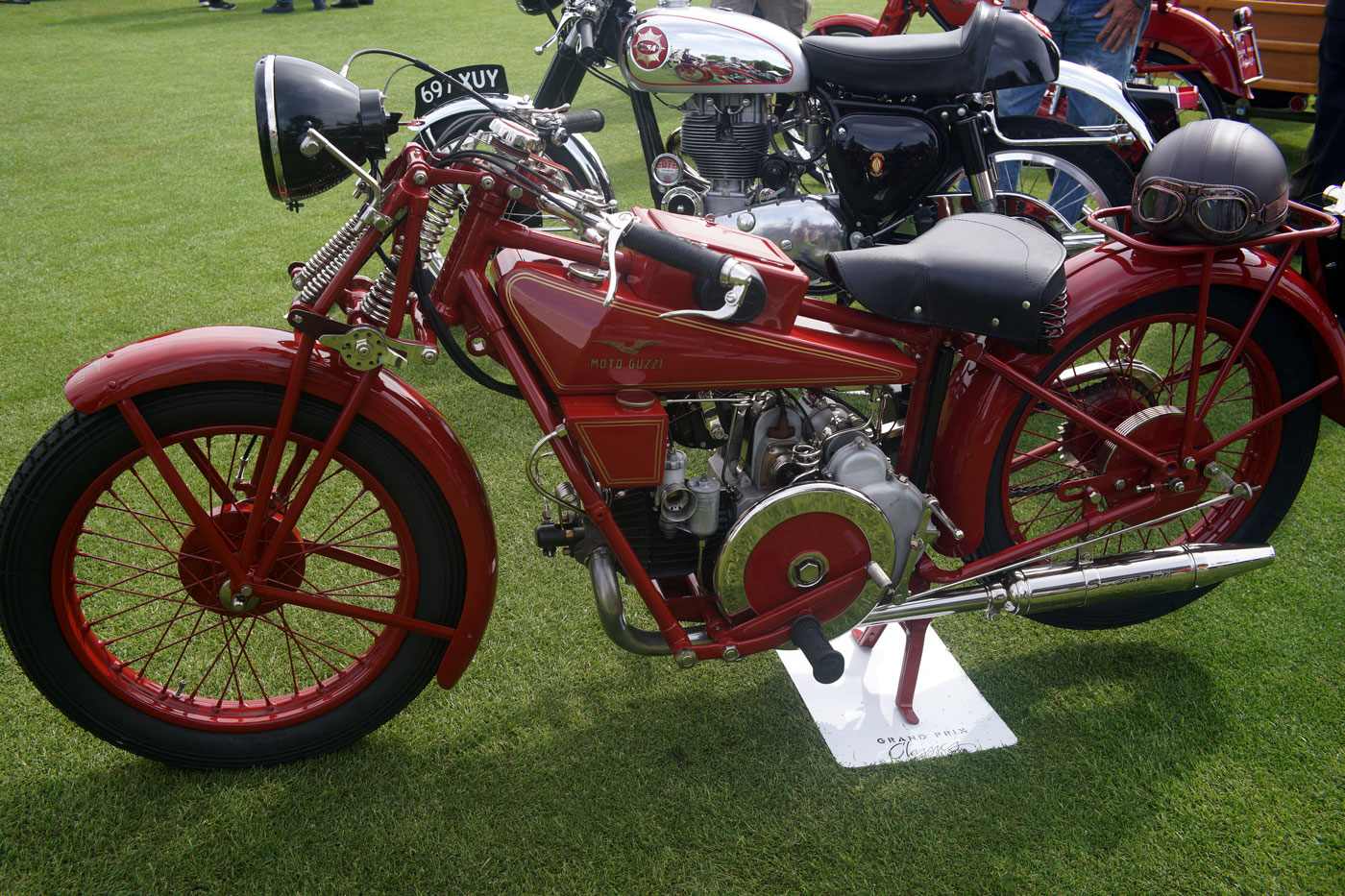
A 1929 Moto Guzzi would qualify as an iconic bike that would be immune from modifications. This is owned by Mark Leonard.
Motorcycles are different. Yes, there are iconic bikes (Brough Superior, AJS, Vincent, etc.) which are so rare and valuable that it would be unthinkable to modify them beyond the modifications that were already made in period. For instance, in January a 1951 Vincent Black Lightening sold at auction for $929,000! To complicate the question of authenticity, enthusiasts starting modifying their bikes almost as soon as they got them, regardless of year, make, or model. This has been going on for almost a century now! So when you attend a show like this, you have to focus not so much on originality and authenticity as creativity and imagination and workmanship, and this is a different mindset one might have when attending the Pebble Beach Concours. Ironically, the first concours, held in France between the wars, put the emphasis on “Elegance,” which of course is a pretty subjective standard. You could say that what makes certain bikes stand out even in a field of wonderful entries is a certain undefinable elegance that shocks you when you see it. This did happen to me at the show, although of course my favorites would be different from yours, and that is what makes this such an outstanding show in the first place.
Motorcycle people are non-conformists. Customizing your bike is what makes it yours, because you don’t want it to look like everyone else’s bike. You know that you have a leg-up on car restorers in two important areas: bikes are much more simple and basic in every respect, and they are a lot cheaper to buy and restore. This means that the basic mechanical work of restoring a bike is within the capability of most home mechanics. And, the owner could still have used his bike everyday to go to work while he was restoring and customizing it to his taste. They are also a lot easier to store.
This brings us to my favorite part of this year’s show: cafe racers. In fact, after looking at a few of the cafe racer styles on the Honda CB 750, I am now determined to build one myself. If you are not familiar with this term, my suggestion is to order the book “Cafe Racers: Speed, Style, and Ton-up Culture,” by Paul d’Orleans, 2017, MotorBooks. Paul is one of the most knowledgeable people about motorcycle design and history in the world, and if you have not heard of him you should subscribe to his website, “The Vintagent.” I spent a dozen years restoring a Velocette MAC and I sold it to Paul, so I can confirm that he is indeed a “Mellow Velo Fellow.” Paul is also a big part of helping Gordon put this show together.
To quote from the book: “Speed. Style. Rock and Roll. Rebellion. These were the pillars that formed the base of the cafe-racer subculture…Infamous for ‘doing the ton’ (over 100 mph on public roads)…The cafe racer subculture, originally South London slang used as a slur against rebellious riders who tore from one coffee bar to another, steadily grew into a complete lifestyle that embodied the vibrant British counterculture of the times…Today ratty and worn-out CB 750 Hondas are stripped of their sheet metal and mufflers and with the fitting of a few universal parts such as clubman bars, voila, they’re cafe racers…Even if some of the bikes are ill-conceived, and their creators have never heard of Mike Hailwood, or smelled castor oil fumes, I really enjoy watching it happen all over again.”
If you want to learn more about this, one of the best places to start is anything written by Richard Pollock of Mule Motorcycle. Here are a few of his suggestions.
“-the most affordable motorcycles to customize are the bikes that time and style forgot.
-all these bikes will most likely have the same issues, because they were all manufactured at least 30-40 years ago.
-choose a bike that has decent parts availability.
-when you are bringing a 70’s bike up to modern performance standards, keep a realistic view of how much you can improve it before you’ve depleted your resources.”
Now you could skip all this work and just buy a Ducati Monster (although that might be a bit pricey for many riders). It all started in 1992 when Ducati showed a prototype designed by Miguel Galluzzi, which is now one of the most copied motorcycles of all time, The Monster was originally a “parts bin special,” using parts from earlier models to save money. It went into production in 1993. It is called a “naked bike” because of the exposed engine and frame. It has a trellis frame, a 90 degree V-twin with desmodromic valves, and is often referred to as a “muscle bike.” It was designed by Fabio Taglioni, an icon who was chief designer and technical director of Ducati from 1954 until 1989. Often called “the bike that saved Ducati,” over 300,000 have been sold, clearly meriting its selection at the show!
In closing, I will feature one of my favorite Ducatis there, a 1974 750 Super Sport, owned by Keith Hale, one of only 401 built to celebrate Paul Smart’s win at Imola in 1972. Keith purchased it new in April, 1975. He raced it for a few years with the AFM before deciding he could probably go to college with the money he was spending, so he did that. For the next decade, it was his only form of transportation. But at the 25 year mark, with over 100,000 miles, the fuel tank started to leak and a cracked battery damaged the paint, so he decided to restore it. Keith has always done his own work, and reports that the bike has always been reliable. It was profiled in a 2002 article in Cycle World, and in 2003 it was included in a Discovery Channel program called, “The Seven Wonders of Motorcycles.” How do I get a copy of that?
As always, thanks to Gordon McCall for putting all of this together. The show is a result of two things: his personal vision, passion, and dedication, and his Rolodex. I wonder what will be featured next year? I suspect he has already figured that out.
Below are more photos taken at the event by Steve Snyder.
